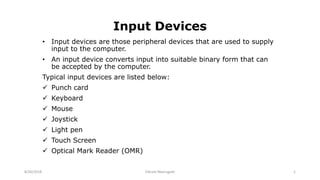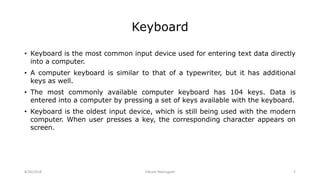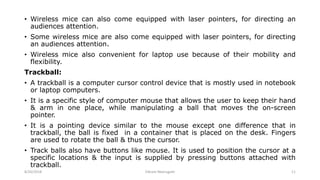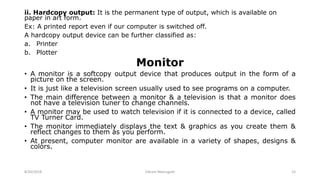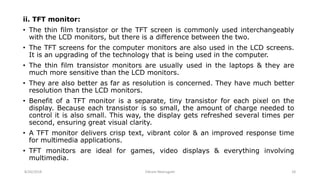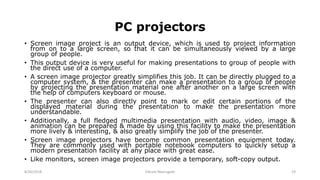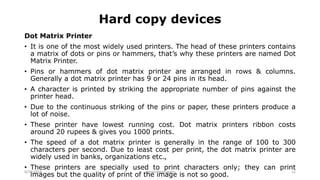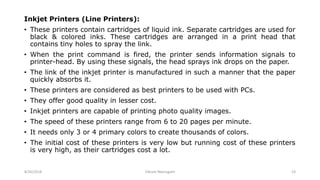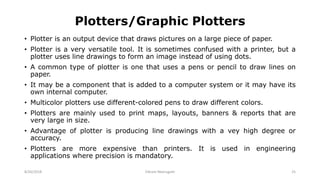The document discusses various computer input and output devices. It describes keyboards, mice, scanners, and other common input devices. It also covers monitors, printers, and other output devices used to display and print information from computers. The keyboard section provides details on standard keyboard keys and features of multimedia and wireless keyboards. Mice types discussed include optical mice, wireless mice, and trackballs.
